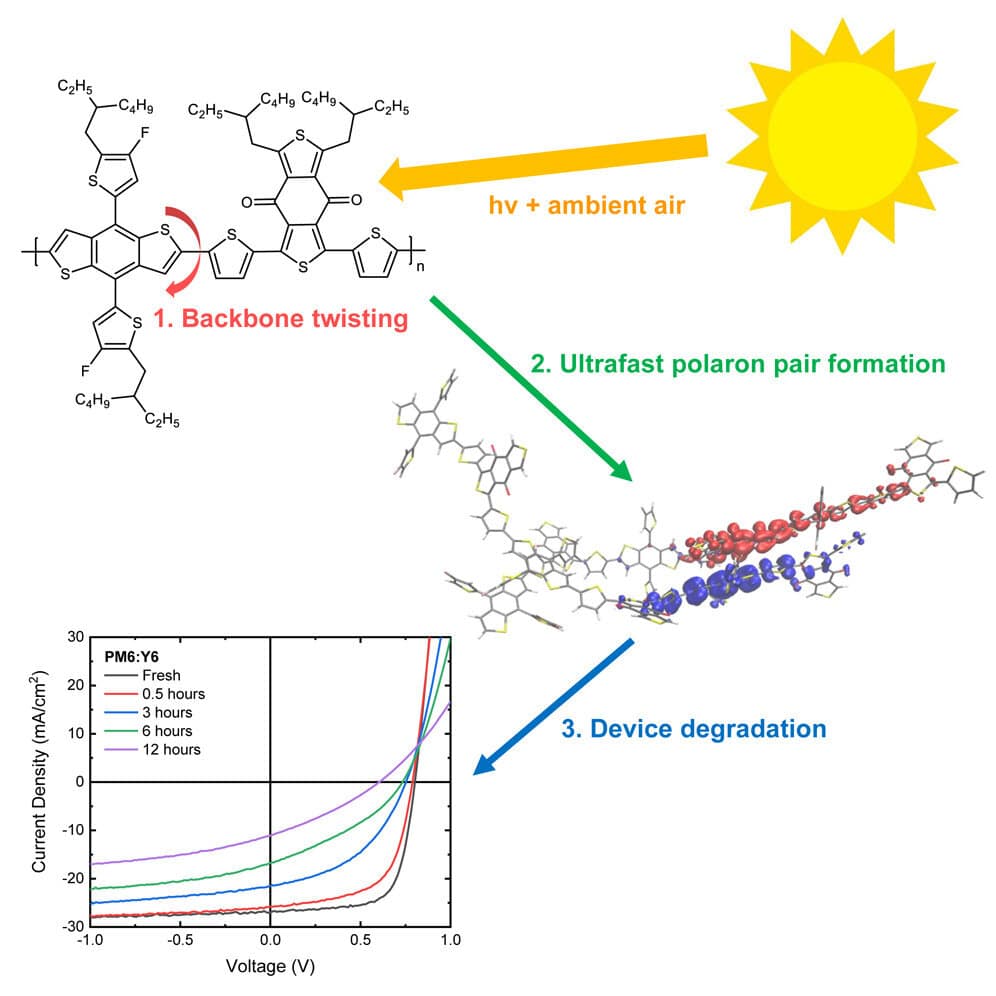Researchers at the University of Cambridge have analyzed degradation pathways of the electron donor and electron acceptor materials.

The degradation pathways are essential for photon absorption to generate electrical current.
As organic semiconductor solar cells are becoming more efficient at converting sunlight into electricity, enhancing the long-term stability of these photovoltaic devices is essential. This has become an increasingly important area of research, as real-world applications require that the photovoltaic device remains efficient for many years.
A group of international researchers led by the Cavendish Laboratory at the University of Cambridge have examined the degradation pathways of both the electron donor and electron acceptor materials. The researchers studied degradation in the ‘electron donor’ and ‘electron acceptor’ materials of organic solar cell light-absorbing layers. These components are crucial for splitting absorbed photons into free electrons and holes, which make up electrical current.
To understand how these materials degraded, the Cavendish researchers worked on an international team with scientists in the UK, Belgium, and Italy. They employed photovoltaic device stability studies, subjecting the operational solar cell to intense sunlight-like light, and ultrafast laser spectroscopy conducted in Cambridge. A new degradation mechanism in the electron donor material has been identified using this laser technique. It involves polymer chain twisting, causing the absorbed photon to undergo a femtosecond deactivation pathway.
The rapid deactivation pathway outcompetes the generation of free electrons and holes from a photon, as noted by scientists. This is the cause of the reduced efficiency of the organic solar cell following simulated sunlight exposure. The significant impact of the polymer chain twisting on the efficiency of the solar cell is an exciting discovery.
Organic solar cells possess distinct features that make them suitable for various applications where silicon photovoltaics are unsuitable. The researchers believe that identifying the degradation mechanism that requires a solution in the current study brings the development of next-generation photovoltaic materials and applications closer to reality.
Reference : Alexander J. Gillett & collegaues, The critical role of the donor polymer in the stability of high-performance non-fullerene acceptor organic solar cells, Joule (2023). DOI: 10.1016/j.joule.2023.03.002









